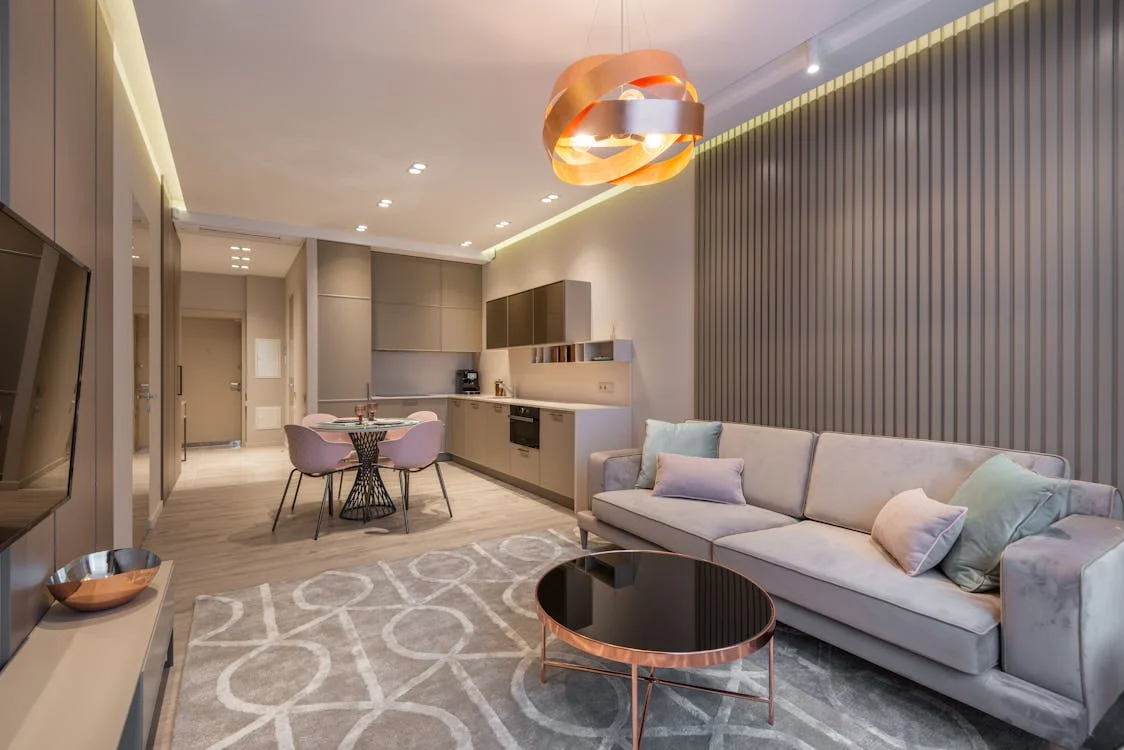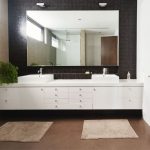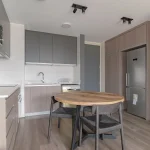The world of furniture design is constantly evolving, with new trends emerging and old ones fading away. Keeping up with these trends can be both exciting and overwhelming, especially when you’re looking to update your home. Whether you’re a fan of bold, modern designs or prefer the charm of vintage pieces, knowing what’s currently in style—and what’s on its way out—can help you make informed decisions for your space.
In this article, we’ll explore the hottest furniture trends of the moment, what’s no longer in vogue, and how you can incorporate these trends into your home without sacrificing personal style or functionality.
What’s Hot: Multifunctional Furniture
In today’s fast-paced world, multifunctional furniture has become increasingly popular. With more people working from home and living in smaller spaces, furniture that serves multiple purposes is not just trendy but also practical.
Bobby Berk, an interior designer known for his innovative designs, says, “Embrace multifunctional furniture that adapts to changing lifestyles. Pieces that can transform from a sofa to a bed or a coffee table to a dining table are in.” This trend is perfect for those who want to maximize their space without compromising on style. Think of a sofa bed that’s comfortable enough for both lounging and sleeping or a coffee table that can be extended to become a dining table when guests come over.
When we downsized to a smaller apartment, we invested in a stylish ottoman that doubles as storage and extra seating. It’s been a game-changer, especially when we have friends over. We also got a fold-out desk that we can tuck away when not in use, freeing up space in our living room.
What’s Not: Overly Formal Furniture
Gone are the days when a home needed a formal living room that was more for show than for actual living. Today’s trends are all about comfort, practicality, and creating spaces that are inviting and lived-in.
Formal furniture, with its stiff lines and delicate fabrics, is falling out of favor. Instead, people are gravitating towards pieces that are cozy and functional, making their homes feel more like a sanctuary and less like a museum.
Joanna Gaines, celebrated for her warm, approachable style, notes, “Natural materials like wood, rattan, and stone are making a comeback. These elements bring warmth and authenticity to any space.” This shift towards natural materials also complements the trend away from formality, creating environments that are both stylish and comfortable.
In our home, we’ve moved away from the stiff, formal furniture we used to have in our living room. We replaced it with a big, comfy sectional that’s perfect for family movie nights, and a reclaimed wood coffee table that adds warmth and character to the space.
What’s Hot: Bold Colors and Patterns
For those who love to make a statement, bold colors, and patterns are very much in style. Whether it’s a vibrant accent wall, a patterned sofa, or colorful throw pillows, incorporating bold elements can add energy and personality to a room.
Nate Berkus, known for his balanced approach to design, advises, “Bold colors and patterns are trending, but balance is key. Incorporate them strategically to create a visually interesting space.” This means using bold elements as accents rather than overwhelming the entire room. For example, a bold, patterned rug can serve as a focal point, while the rest of the room remains neutral.
Last year, we decided to experiment with this trend by adding a brightly colored armchair to our otherwise neutral living room. It instantly became the room’s highlight and sparked many compliments from guests. We paired it with a few patterned throw pillows and a matching rug to tie the look together.
What’s Not: All-White Everything
While all-white interiors have had their moment in the spotlight, this trend is starting to wane. Although white can make a space feel clean and open, it can also come across as sterile and uninviting if not done correctly.
People are now leaning towards warmer, more colorful palettes that bring life and personality to their homes. While white will always have a place in design—especially as a backdrop—it’s no longer the dominant color in trendsetting interiors.
We learned this the hard way when we first moved into our home and painted almost every room white. While it looked fresh initially, it started to feel a bit bland over time. We’ve since added more color through art, rugs, and painted accent walls, which has made our home feel much cozier.
What’s Hot: Sustainability and Eco-Friendly Furniture
Sustainability isn’t just a buzzword; it’s a growing trend in the furniture world. As more people become aware of the environmental impact of their choices, they’re looking for furniture made from sustainable materials and produced ethically.
Emily Henderson, a designer with a focus on conscious living, emphasizes, “Sustainability is a growing trend. Look for furniture made from recycled materials or produced ethically.” This includes pieces made from reclaimed wood, recycled metal, or upholstery crafted from organic textiles.
For instance, when we were in the market for a new dining table, we chose one made from reclaimed wood. Not only does it have a beautiful, rustic look, but it also feels good knowing we’re making an environmentally responsible choice.
What’s Not: Fast Furniture
With the rise of sustainable living, fast furniture—cheap, mass-produced pieces designed to be quickly replaced—is falling out of favor. These items are often made from lower-quality materials and contribute to a throwaway culture, which is increasingly seen as unsustainable and wasteful.
Consumers are now more interested in investing in quality pieces that will last for years, even decades. This shift is also a response to a growing awareness of the environmental impact of furniture production and disposal.
I used to buy inexpensive furniture just to fill up space quickly, but over time, I realized that these pieces didn’t last and ended up costing more in the long run. Now, we focus on purchasing higher-quality, durable furniture that we can keep for years, knowing that we’re making a more sustainable choice.
What’s Hot: Mixing Old and New
Another exciting trend is the blending of old and new pieces to create a unique, eclectic look. Mixing vintage or antique furniture with modern accents not only adds character to a space but also reflects a more personalized style.
Kelly Wearstler, known for her bold and eclectic designs, encourages, “Mixing old and new pieces can create a unique and eclectic look. Incorporate vintage or antique furniture with modern accents.” This trend is perfect for those who love to treasure hunt, whether at flea markets, antique shops, or even online.
In our home, we’ve combined a mid-century modern sideboard we found at a thrift store with a sleek, contemporary mirror. The contrast between the two styles creates a dynamic and interesting space that feels both modern and timeless.
What’s Not: Matching Furniture Sets
Gone are the days when every piece of furniture in a room had to match perfectly. The overly coordinated look of matching furniture sets is now considered outdated and, frankly, a bit boring.
Today, the trend is to mix and match pieces from different styles, eras, and finishes to create a more curated and lived-in feel. This approach allows for more creativity and personal expression in home design.
When we first decorated our bedroom, we bought a matching furniture set, but over time, it started to feel too uniform. We’ve since replaced a few pieces with items that have more character, like a vintage nightstand and a handwoven rug, which have made the room feel much more interesting and personalized.
What’s Hot: Oversized Furniture
Oversized furniture is making a big splash in the design world, especially as people prioritize comfort and coziness in their homes. Large, plush sofas, deep armchairs, and even oversized ottomans are becoming staples in living rooms.
Hilary Farr, known for creating cozy, inviting spaces, shares, “Oversized furniture is gaining popularity, creating a cozy and inviting atmosphere. However, ensure it fits proportionally with your space.” While oversized pieces are trendy, it’s important to ensure they don’t overwhelm the room. Balance is key, so if you’re opting for a large sofa, pair it with more delicate accent pieces to maintain harmony.
We recently upgraded to a large sectional sofa that’s become the heart of our living room. It’s perfect for lounging and fits our space beautifully, making the room feel cozy and welcoming without being cramped.
What’s Not: Minimalism to the Extreme
While minimalism has been a popular trend in recent years, the extreme version—where spaces are stripped down to the bare essentials—has started to lose its appeal. People are now looking for ways to add warmth and personality to their homes rather than adhering strictly to minimalist principles.
Instead of stark, empty spaces, the trend is moving towards a more balanced approach that incorporates a mix of textures, colors, and personal touches. This shift allows for a home that feels lived-in and comfortable rather than cold and impersonal.
We’ve slowly started adding more decor and personal items to our home after initially trying out the minimalist trend. It’s made a big difference in how the space feels—much warmer and more inviting.
Conclusion: Navigating Furniture Trends with Confidence
Furniture trends come and go, but the key to a stylish, functional home is finding what works best for you and your lifestyle. Whether you’re drawn to the latest trends or prefer a more timeless approach, the most important thing is to create a space that feels comfortable, welcoming, and true to your personality.
By incorporating some of the hottest trends, like multifunctional furniture, bold colors, and sustainable materials, while avoiding outdated styles like overly formal furniture and fast furniture, you can keep your home both stylish and functional.
Remember, trends are just guidelines. Your home should reflect your tastes and needs, so don’t be afraid to mix and match, experiment, and make your space uniquely yours.










